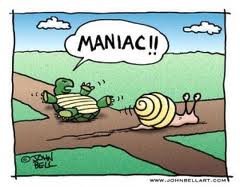 This is the second of three blogs related to setting goals. Clancy kicked off the series with her excellent post Road Maps Help You Get There.
This is the second of three blogs related to setting goals. Clancy kicked off the series with her excellent post Road Maps Help You Get There.
I will be building on what she started, talking specifically about how to set more effective goals. We’re starting a new year, and as usual, this is a time for renewal, a time for fresh starts. It is very common to set goals in personal and professional lives. Why is it that so many of these new year’s resolutions remain unfulfilled at the end of the year?
First, they aren’t written down.
“People with clear, written goals, accomplish far more in a shorter period of time than people without them could ever imagine.”
This quote, from an unknown source, drives to the heart of this post. Life is busy and unless we focus our energy, we will fail to best utilize the limited time we have for writing.
A goal not written down is a daydream, whereas a written goal is a dream with a deadline. If you like the idea of being a writer but aren’t interested in actually finishing anything, then don’t bother reading on. Otherwise, roll up your sleeves and get your pencil ready.
Second, they aren’t meaningful.
Writing a goal isn’t enough. If it’s ambiguous or you don’t really understand your goal, you’re setting yourself up for failure.
For example, a writer may decide to set the goal, “I’m going to write a book this year.”
Wonderful, but not very effective.
I’ve set this very goal in the past, and I’ve proven to myself that I need to be far more specific.
What kind of book? How long? Is it a 10 page children’s picture book or a 150,000 word epic fantasy novel?
If you say you’re going to write a 100,000 word novel (pick your genre), then you have a starting point for setting a meaningful goal. There are a few other things you need to understand first.
How are you going to approach writing this book?
Are you a free-writer who will sit down at the computer and just start typing in hopes of triggering the Muse to start whispering in your ear? That’s fine. Just recognize that the early effort, and maybe the entire early draft, is just an exploration, a search for your novel. Once you find it, you’ll probably need to throw away most of what you’ve done to that point because only then are you ready to actually start writing the real story. Actually completing a viable first draft of a 100,000 word novel this way may require 250,000 words or more.
If you are more of a story planner, have you discovered your story yet? If not, you will need to allow for perhaps months of work before beginning the actual draft of the story. You need to explore concept, theme, characters, setting, and plot. You need to develop conflicts and figure out your ending and weave in sub plots through the outline. You may write 50,000 words or more in your outlining process before you’re ready to begin a viable draft.
Whichever way you approach the work, writing a 100,000 word novel in a year is far more than just banging out 100,000 words into a text file.
Once you understand what you wish to accomplish, you are ready to set a goal.
Third. They aren’t measurable.
Isn’t the goal of writing a 100,000 word novel measurable?
The answer: partially
If you reach the end of the year with a 100,000 word completed draft of your novel in hand then you can say you reached that goal. However, how do you know in June that you’re on track to make it? Have you set any measurements to help you plan the effort each month?
Break the goal down into smaller blocks that will serve as sub-goals you can work each month, week, or even day. If you can do this, you’ll know at any given time if you are on track or how far behind you’ve fallen.
Another benefit of breaking goals down into smaller blocks is the goal suddenly feels far more achievable. Sitting at the computer, staring at blank page number one, and knowing you’ve got 100,000 words still to go can be extremely daunting and discouraging. It’s not so bad to think, “I’ve only got to write 1000 words today.” You can do that, no problem.
Take these three components of successful goals and apply them to any goals you wish to set. You’ll find they immediately help you define, clarify, and organize your goals.
For example, last year I set the goal to write two complete novels. I didn’t quite make it. Part of the reason was that I did not follow this process as closely as I knew I should. I did complete two drafts of one novel, make significant edits in a previously completed novel, write a new novella, and complete about 70% of the planning process of another full novel. I am pleased with all the work I did complete, but I could have done better.
This year I am approaching the setting of goals more carefully. I am still finalizing the plan, but right now it looks like this:
Goal 1: Complete edits to The Sentinel’s Call, my 150,000 word epic fantasy novel.
The detailed monthly plan is not complete, but at a high level, I need to:
- Re-read the novel and identify needed edits to improve book pacing.
- Compare planned edits with feedback from my agent, and finalize plan
- Make the edits.
I expect to complete this effort by April or May.
Goal 2: Write the sequel to The Sentinel’s Call. This will be a 125,000 word epic fantasy novel.
Plan will include:
- Complete high level outline (Current state: 70% complete at 3,500 words).
- Tie plot to planned edits to The Sentinel’s Call.
- Complete detailed outline of up to 30,000 words.
- Write first draft in 3 months.
- Gather feedback from beta readers, plan second draft, and write it prior to the end of the year.
As you can see, I still have work to do, but I’m getting close. As I finalize the goals, measurements, and the plan to achieve them, you can see how the resulting tasks will easily become sub-goals and milestones I can use to benchmark progress and keep myself on track. I’ll plan to schedule at least a couple of burst-writing sessions in the months with the heaviest chapter writing to increase productivity.
If I can identify clearly and realistically what I’ll need to do every month to reach these goals, then I just need to work the plan.
We’ll see how well I do.
What are your plans for next year?


